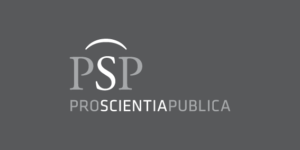General Theoretical Notions About the Semiotics of Culture and the Arts
DOI:
https://doi.org/10.15503/jecs2025.3.711.726Keywords:
Semiotics, art, culture, text, semiologyAbstract
Aim. This article offers an approach to general theoretical issues in the semiotics of culture and the arts, with an emphasis on key concepts from these areas of knowledge. The evolution of the object of study, theoretical discussions associated with different theoretical and methodological traditions, and the basic categorical system are among the topics covered.
Methods. To prepare the article, general or theoretical methods were used, such as analytical-synthetic and inductive-deductive, which were materialized through documentary analysis, interpretation, and the study and criticism of sources.
Results. This article adopts positions regarding categories and concepts of semiotics, such as culture, languages, the semiotic transposition of languages, codes, text, and criteria of textuality. It analyzes definitions and theoretical proposals from various authors and offers valuable criteria for continuing the scientific debate.
Conclusions. Semiotics is an area of human knowledge characterized by a multiplicity of theoretical and methodological approaches and positions. In many scientific and academic practices, there is still an attachment to the founding notions of Peirce and Saussure, as well as to the traditional designations of semiotics and semiology, or to the dichotomous and trichotomous conceptions of the sign, aspects that are too rudimentary to satisfy current demands for the semiotics of culture and the arts.
Cognitive value. The article provides a solidly argued study, based on an extensive bibliographic review, knowledge of cultural and artistic issues, and the practice of art itself in different manifestations.
Downloads
References
Bermúdez, N. D. (2008). Aproximaciones al fenómeno de la transposición semiótica: lenguajes, dispositivos y géneros. Estudios Semióticos, (4). https://dialnet.unirioja.es/servlet/articulo?codigo=5762216
García, I. D. (2010). Comunicación y texto. Editorial Pueblo y Educación. First.
Duka, A., Leka, K., Vampa, M., Bursová J. & Jenisová, Z. (2024). The Impact of Climate in Inclusive Classrooms - Influencing the Motivation of Students with Special Needs. Journal of Education Culture and Society, 15(1), 303-314. https://doi.org/10.15503/jecs2024.1.303.314
Eco, U. (1990). Semiótica y Filosofía del Lenguaje (R. Pochtar., Trans). Editorial Lumen S. A. First. (Original work published 1984).
Eco, U. (2000) Tratado de Semiótica General (C. Manzano,Trans.). Editorial Lumen, S. A. Fifth. (Original work published 1976).
Greimas, A. J. (1987). Semántica estructural: Investigación metodológica (A. de la Fuente, Trans.). Editorial Gredos. First. (Original work published 1966).
Karam, T. (2014). Introducción a la semiótica de la imagen. Universidad Complutense de Madrid. http://portalcomunicacion.com/ ISSN 2014-0576
Klinkenberg, J. (2006). Manual de Semiótica General. Fundación Universidad de Bogotá Jorge Tadeo Lozano.
Kralik, R. (2023). The Influence of Family and School in Shaping the Values of Children and Young People in the Theory of Free Time and Pedagogy. Journal of Education Culture and Society, 14(1), 249-268. https://doi.org/10.15503/jecs2023.1.249.268
Kristeva, J. (1988). El lenguaje, ese desconocido: Introducción a la Lingüística. Editorial Fundamentos.
Lotman, Y. (1998). La semiosfera II: Semiótica de la cultura, del texto, de la conducta y del espacio (D. Navarro, Trans.). Ediciones Cátedra S. A. First
Lotman, Y. (1982). Estructura del texto artístico (V. Imbert, Trans.). Ediciones Istmo. First. (Original work published 1970).
Morales, E. (2015). Pólemos críticos. Ediciones Cúpulas. First. Pólemos críticos.
Navarro, D. (1986). Cultura y marxismo: problemas y polémicas. Editorial Letras Cubanas. First. https://catalog.princeton.edu/catalog/995062103506421
Prado Soriano, L. Montero Zayas, G. (2023). Nociones conceptuales básicas en el análisis semiótico de la imagen visual. Revista Ciencias Pedagógicas, 16(1), 94-110. https://www.cienciaspedagogicas.rimed.cu/index.php/ICCP/article/view/406
Prado Soriano, L., Montero Zayas, G., Šurín, S., Jenisová, Z. (2024). Appreciation, Analysis and Creation in the Teaching-Learning of the Plastic Arts. Journal of Education Culture and Society, 15(2), 583-597. https://jecs.pl/index.php/jecs/article/view/1712
Savranski, I. (1983). La cultura y sus funciones (M. Ciutat, Trans.). Editorial Progreso. (Original work published 1979).
Ubersfeld, A. (1989). Semiótica teatral. Ediciones Cátedra, S. A.
Vilches, L. (1995). La lectura de la imagen: prensa, cine y televisión. Ediciones Paidós.
Zecchetto, V. (2002). La danza de los signos: Nociones de semiótica general. Ediciones Abya-Yala. First.
Downloads
Published
Issue
Section
License
Copyright (c) 2025 Geovannys Montero Zayas, Leandro Ernesto Prado Soriano, Djamaldinova Shakhlo Obloberdiyevn, Beáta Akimjaková, Martina Pavlíková

This work is licensed under a Creative Commons Attribution 4.0 International License.
CC-BY
Authors retain copyright and grant the journal right of first publication with the work simultaneously licensed under a Creative Commons Attribution License that allows others to share the work with an acknowledgement of the work's authorship and initial publication in this journal. All authors agree for publishing their email adresses, affiliations and short bio statements with their articles during the submission process.


